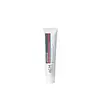What's inside
What's inside
 Key Ingredients
Key Ingredients

 Benefits
Benefits

 Concerns
Concerns

 Ingredients Side-by-side
Ingredients Side-by-side

Water
Skin ConditioningAzelaic Acid
BufferingOctyldodecyl Myristate
EmollientIsononyl Isononanoate
EmollientIsostearyl Isostearate
EmollientCetyl Alcohol
EmollientGlyceryl Stearate
EmollientEthoxydiglycol
HumectantGlycerin
HumectantCoco-Caprylate/Caprate
EmollientNiacinamide
SmoothingXylitol
HumectantPEG-75 Stearate
Pentylene Glycol
Skin ConditioningCetearyl Alcohol
EmollientCeteth-20
CleansingSteareth-20
CleansingGlyceryl Caprylate/Caprate
EmollientWater, Azelaic Acid, Octyldodecyl Myristate, Isononyl Isononanoate, Isostearyl Isostearate, Cetyl Alcohol, Glyceryl Stearate, Ethoxydiglycol, Glycerin, Coco-Caprylate/Caprate, Niacinamide, Xylitol, PEG-75 Stearate, Pentylene Glycol, Cetearyl Alcohol, Ceteth-20, Steareth-20, Glyceryl Caprylate/Caprate
 Reviews
Reviews

Alternatives
Ingredients Explained
These ingredients are found in both products.
Ingredients higher up in an ingredient list are typically present in a larger amount.
Azelaic acid is a multitasker ingredient that helps treat acne, pigmentation, and irritation. It is a great option for sensitive skin.
What makes azelaic special?
The best thing about azelaic acid is it's gentleness. It's generally well-tolerated and safe to use alongside other actives like niacinamide or salicylic acid.
Unlike AHAs, azelaic acid will not make you photosensitive/sun sensitive.
You can find this ingredient naturally occurring in grains like wheat, rye, and barley. In cosmetics, azelaic acid is typically lab-made, which is more stable and effective.
Learn more about Azelaic Acid